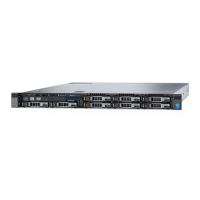4
Processor
Processor Features
Based on the Intel® 14nm fabrication technology, the Intel® Xeon® processor family introduced a new micro-architecture that
provides signicant performance advantages and new features targeted for a range of workloads such as: High Performance
Computing (HPC), Enterprise applications, Cloud service providers, storage, network applications, Internet of Things (IoT), and many
more. The following table summarizes key features of the processor family.
Table 4. Processor Features
Category Feature Function
Compute More Cores Up to 28C
Intel® AVX-512 512-bit instructions
MLC Optimization Acceleration of enterprise-class and HPC
workloads
Heterogeneous support with converged
programming environment
Higher 'private-local' ratio in cache
Lower power
Intel® Ultra Path Interconnect (UPI)
(replaces QPI)
Increases bandwidth: up to 10.4 GT/s
Intel AVX-512 VNNI 512-bit instructions to improve Deep
Learning performance
Memory & Security Memory Capacity and Bandwidth increase Up to DDR4 2933 MT/s (11% increase)
Up to 6 channels (50% increase)
MPX (Memory Protection Extensions) Prevents buer overow
I/O Fabric Integration On package integration of next-generation
Intel® Omni-Path Fabric controller
PCIe Bandwidth Up to 48 PCIe lanes; 3.0 speed 79 GB/s
bi-directional pipeline (from 53 GB/s on
BDW)
Separate Reference with Independent
Spread Spectrum Clocking (SRIS)
Eliminates clock in PCIe cables
MCTP Scaling 256 PCIe buses, up to 8 segments
Storage Non-Transparent Bridge (NTB)
Enhancements
3 full-duplex NTBs and 32 MSI-X vectors
Crystal Beach DMA (CBDMA) Adds MMIO -> mem transfer support
2X performance increase vs. prior gen
platform
14

